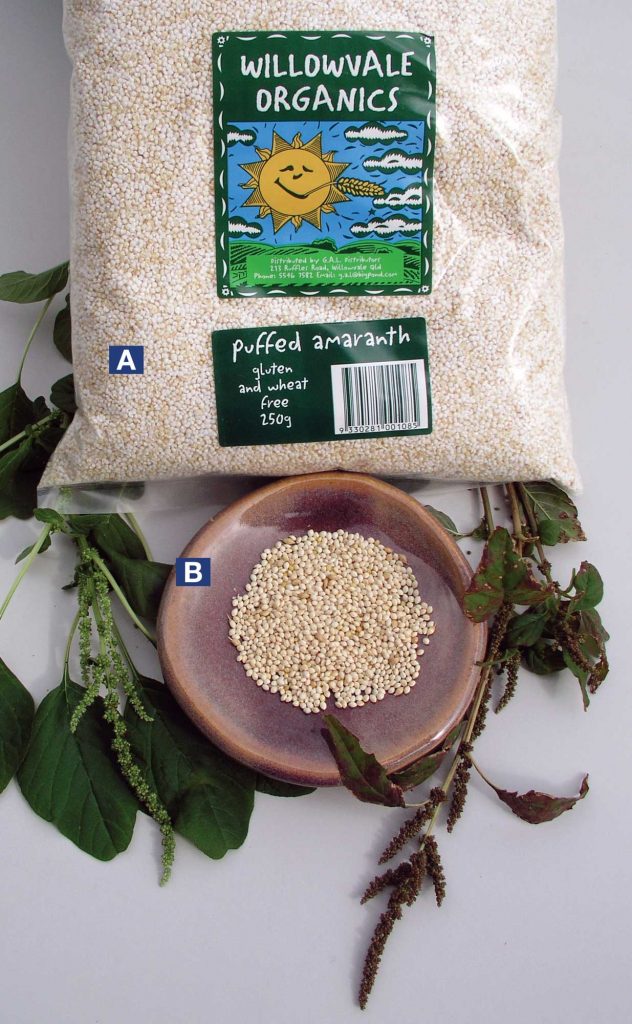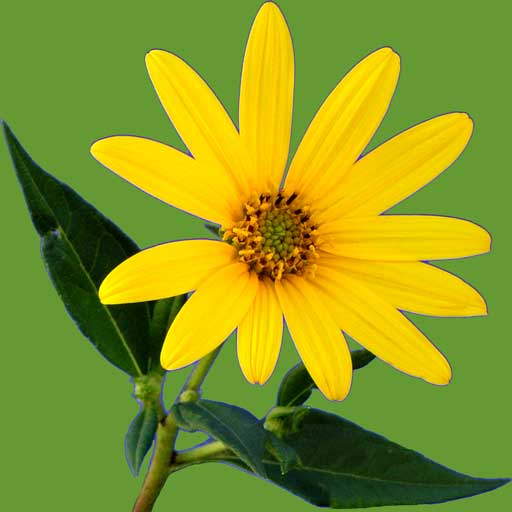Amaranth
Amaranthus hypochondriacus
F. Amaranthaceae
… … omitted text, please see How can I grow and use Sprouts as living food? for full text.
Constituents:
linoleic, linonelic and oleic acid, squalene, rutin, quercetin, phytosterols, quinone Co Q10, oxalic acid, soluble and insoluble fibre, protein 20% with 8 essential amino acids (high in lysine, threonine and tryptophan)
Vitamins:
A, B1, B2, B3, B5, B6, B17, C, E, folic acid
Minerals:
calcium, copper, iron, magnesium, phosphorus, potassium, sodium, zinc
Actions:
antidiarrhoeal, antihemorrhagic, astringent, nutritive, tonic

Medicinal Uses
… … omitted text, please see How can I grow and use Sprouts as living food? for full text.
Used as an astringent, the plant is taken internally for diarrhoea, bleeding from the bowels and excessive menstruation. Use 1 tablesp. fresh chopped leaves and infuse with 1 cup boiling water, steep 3-5 minutes, drink 2 cups daily, for general health and immunity. The tea is gargled for sore mouth and throat and used as a wash for skin rashes.
Amaranth seeds are a rich source of squalene. Squalene performs as a strong antioxidant, being able to reduce or remove harmful effects of pollution in the body caused by toxic substances from the environment including car exhaust fumes and industrial wastes. The benefits of improved health have become evident for people who had previously suffered with chronic fatigue, when they took squalene. In the past, shark and whale liver oils have been the main sources of squalene, but rather expensive. Recent research shows that amaranth oil has almost 8 times the amount of squalene as shark liver oil, and is a more acceptable source for vegetarians. New research shows that squalene may inhibit the growth of tumour-induced new blood vessels, and also may reduce the spread of tumour metastases and significantly reduce the growth of lung, breast, prostate and brain tumours, and in certain cases eradicate tumours. Squalene has also been used for control of allergies, diabetes, candida, pain, arthritis, asthma, and to improve memory function. Researchers have said that squalene is perhaps the most amazing immune enhancer, ever discovered.
Culinary Uses
The Greeks called it ‘amarantus’ meaning never withering; in Sanskrit the plant was called king of immortality; the ancient Aztecs knew it as food of immortality; now… in our present century, amaranth is available in health food shops, but do we know its nutritive value? Nutritionally rich, gluten free and found to be less allergenic than most grain cereals, it is sometimes served to babies, young children, lactating mothers, invalids and the elderly.
Amaranth seeds are richer in protein than the major, grain cereals; also the amino acid balance comes closer to nutritional ideals as a high quality, easily assimilable protein. Seeds of amaranth have nearly twice the level, of the amino acid lysine, as that found in wheat protein and generally deficient in other grains. Seeds contain 8 times more iron than wheat grains and are also rich in calcium, potassium, magnesium and fibre. Seeds are cooked as a breakfast cereal and served with milk, honey, fruit, or mixed with other cereals. When seeds are popped like popcorn, they have a nutty flavour. Ground seeds are used as flour, added to soups, sauces, cakes and bread. The flour is especially suitable for unleavened breads, flatbreads, like tortillas and chapatis, and may be used as the sole, or predominant ingredient. For making leavened baked goods and also yeast–raised breads, 20% flour is blended with 80% wheat flour. This mixing with wheat flour gives the dough the essential ‘stickability’, as amaranth lacks functional gluten. Amaranth sprouts are eaten in salads, but are not very appealing in flavour, however, when sprouts are lightly cooked the taste is a little more pleasing. Sprouts are dehydrated and ground into flour to add to pancakes, cereal, bread, and muffins. When seeds are grown on a tray as baby microgreens for 20-30 days, they develop red leaves, which can be added to a salad mix to give vivid colour. Once a plant has grown in the garden and self-seeded, young seedlings may germinate readily.
These young seedlings, pulled, washed, chopped and lightly steamed or stir-fried, are a valuable food source, used in many Oriental countries. Amaranth leaves dried, then crushed in the hands, to a fine powder, are added to a variety of cooked dishes. Although amaranth is rarely listed in agricultural statistics, it is believed that amaranth may actually be the most widely used green vegetable in tropical areas, no doubt due to its hardiness. Young leaves of plants are boiled as greens. The water is discarded because of the oxalic acid content, which could be toxic if taken in excess. I have used leaves in a quiche recipe. My family voted that these leaves, gave the best taste of 5 quiches I made, when experimenting with a variety of high protein, green leaves.
From the red flowering varieties of amaranth, a food colouring, called betalaina, is extracted, that is nontoxic. The dye is slowly degraded by light, but none-the-less has potential, because synthetic red dyes are suspected of being health hazards. Do not confuse, the food additive amaranths No.s 123 and E123, synthesised from coal tar and used to give colour in icecreams, jams, jellies, gravies, soups and on unripe oranges, with that of the amaranth plant. These additives have been known to provoke hyperactivity, eczema, asthma, rhinitis; and should be avoided by pregnant women and people with aspirin sensitivity.
There are many amaranthus species that may be used similarly to A. hypochondriacus. All species are easy to grow, and the kinds most readily available as seed packets, for planting include: Vegetable amaranth also called Chinese spinach, Amaranthus tricolor; Love-lies-bleeding A. caudatus, Indian cabbage A. lividus (p 119) and Tampala or Chinese greens, A. giganteus, if this species is left to grow 25-30 day to what is called the microgreen seedling stage, the bright pink leaves will add wonderful colour to a tossed salad. There are several Australian species of amaranthus (p 119). They do not have the showy, bright coloured, tassel flowers, but are there for the taking by anyone who knows their identity, and in times of adversity or famine, could be a survival food.
And to mention several other useful, extremely hardy plants, that also belong to the Amaranthaceae family: Mukunu-wenna Alternanthera sessilis (p 125), and Purple leafed mukunu-wenna A. versicolor (p 125), both of these species are used as a raw, cooked and green leaf garnish, and medicinally for strengthening the eyes, nervous system and for eye ailments. Also useful as a salad leaf, steamed or stir-fried is Sambu lettuce A. sissoo (p 126), a crickly, leaf form. These 3 Alternanthera species are perennials, seed plentifully, and could be grown as baby salad leaves, classed as microgreens (p 32).


